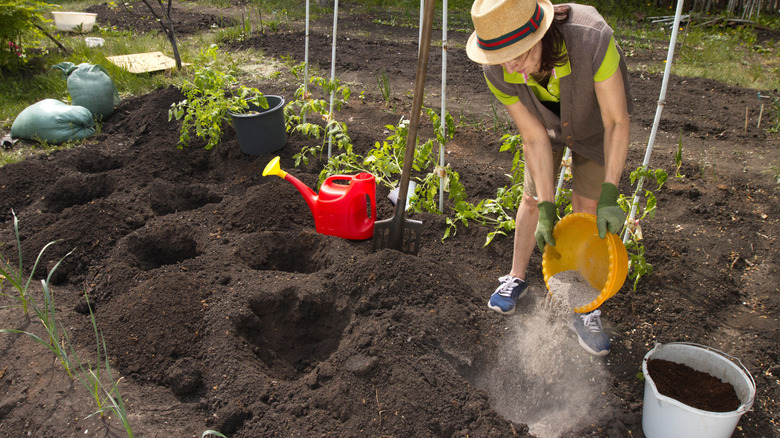How Wood Ash Can Help You Grow Healthy Fruit Trees And Vegetable Gardens
We may receive a commission on purchases made from links.
Looking for a low-cost nutrient booster for your fruit and vegetable plants? The answer may be in your wood-burning fireplace or fire pit. Fireplace ash can help your garden thrive if it comes from untreated, unpainted wood. It's packed with calcium and supplies small amounts of phosphorous, magnesium, boron, and other elements that support fruiting plants. Plus, it's a terrific potassium supplement.
Master gardener Josh Gardens, also on Instagram as @theplanttechie, helps his fruit trees flourish by giving them wood ash. "Wood ash from your fireplace or wood stove offers multiple benefits for the garden, particularly as a source of potassium. Potassium helps plants regulate water, flower, and produce fruit," he told Outdoor Guide in an exclusive interview. "I apply wood ash around my fruit trees every year in winter by spreading it along the drip line. This provides them with a natural, gentle fertilizer that supports overall health and resilience."
Josh also recommends enhancing vegetable garden soil with wood ash. "Certain crops, especially tomatoes and other nightshades like peppers, respond particularly well to wood ash application. Its potassium content supports healthy growth and fruit production, while the calcium present in wood ash can help prevent blossom end rot. This common issue causes fruits to develop dark, sunken spots," he says. Josh appreciates wood ash's alkaline pH, too. "It raises the pH of acidic soils, making them more suitable for plants that prefer neutral to slightly alkaline conditions, such as root vegetables, legumes, and fruit trees." This fact comes with a warning: Keep wood ash away from blueberries, which need acidic soil, and potatoes, which are more vulnerable to potato scab when grown in alkaline conditions.
Applying wood ash to a vegetable garden
Wood ash can be blended into soil or applied as a top dressing, a method you might use for fertilizing your lawn. No matter how you plan to deliver it, test your soil's pH and nutrient levels first. The MySoil test kit is one option. A product like this can tell you how much wood ash to use, which lowers the risk of over-fertilizing, creating an excessively alkaline environment, and other mistakes beginner gardeners make.
Josh Gardens likes to nourish raised-bed vegetable gardens with wood ash. "I always start by taking a pH reading to ensure the soil stays within the desired range of 6 to 7, which is ideal for most crops. Once confirmed, I work the wood ash into the soil ... This approach helps the nutrients integrate better and reduces the chances of it blowing away," he says, noting that a 5-gallon pail of ash is the maximum he'd use for each 1,000 square feet of gardening space. He recommends a similar ash-to-soil ratio for smaller gardens: no more than 2 ½ cups of ash for a raised bed that's 32 square feet.
Alternatively, you can compost wood ash before adding it to your garden. This makes it safer to use around plants that need acidic soil. "Since compost is naturally acidic, mixing in wood ash helps balance the pH ... This method not only improves the quality of your compost but also makes it easier to incorporate into your garden without causing sudden pH shifts," Josh says, adding that it's wise to "work the wood ash into the compost well ahead of applying it to your beds."

